Are you a foodie who loves experimenting with new ingredients? If so, you may have come across sassafras, a tree native to the United States that has been used in cooking and medicine for centuries. But, there’s a raging debate over whether it’s safe to cook with. While some swear by its unique flavor, others worry about potential health risks.
The primary concern regarding sassafras is the presence of safrole, a compound that has been linked to liver damage and cancer when consumed in large quantities. Due to this risk, the FDA banned the use of safrole in commercial food production way back in 1960.
However, despite the ban, sassafras continues to be an essential ingredient in traditional Southern cooking, especially dishes like gumbo and jambalaya. Some chefs and food enthusiasts also believe that sassafras offers health benefits such as anti-inflammatory and antibacterial properties.
So what’s the verdict? Is it safe to cook with sassafras? The answer isn’t straightforward and depends on several factors. In this blog post, we’ll dive deep into the debate surrounding sassafras and its safety concerns while exploring its culinary uses. We’ll also provide tips on how to safely incorporate this unique ingredient into your cooking repertoire.
Contents
What is Sassafras?
Sassafras, a deciduous tree native to North America, is a fascinating plant with an array of medicinal and culinary uses. Growing up to 60 feet tall, this tree boasts three unique types of leaves: unlobed, bilobed, and trilobed. Its bark, leaves, and roots have been used for centuries in traditional medicine and cooking.
Traditional Medicine Uses
Sassafras has a rich history in traditional medicine, where it was used to treat a variety of ailments such as fever, diarrhea, and rheumatism. However, its medicinal use has been restricted due to the presence of safrole in sassafras oil. Safrole is a chemical known to cause liver cancer in animals when consumed in high doses.
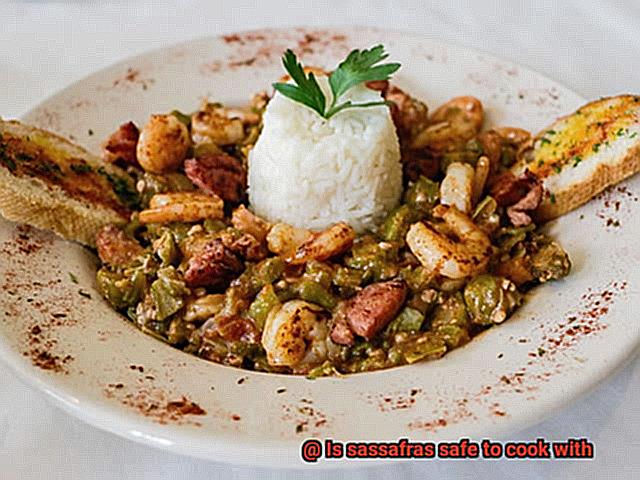
Culinary Uses
Sassafras has an unmistakable flavor that is commonly used in Cajun and Creole cuisine. The most famous use of this tree is in filé powder, made by grinding sassafras leaves. Filé powder is a staple ingredient in gumbo and other dishes. Furthermore, sassafras root bark is also used as a flavoring agent in root beer.
Safety Concerns
While sassafras is generally recognized as safe by the FDA for use in small amounts as a flavoring agent, it is important to note that consuming large amounts of safrole can still be harmful. In fact, the FDA banned the use of sassafras in food and beverages in 1960 due to its potential health risks. Thus, it is crucial to prioritize safety when using sassafras for culinary or medicinal purposes.
Nutritional Benefits of Sassafras
This herb is not only known for its medicinal and culinary properties but also for its potential nutritional benefits. Even though the FDA has banned sassafras from being used in food and beverages, some people still use it in small quantities as a seasoning or spice.
One of the most fascinating potential benefits of sassafras is its high antioxidant content. Antioxidants are essential for preventing cellular damage caused by free radicals, which can lead to a range of health issues such as cancer, heart disease, and aging. Sassafras contains high levels of polyphenols, a type of antioxidant also found in red wine and dark chocolate. These antioxidants can help protect your body from harmful toxins and improve your overall health.
Sassafras also contains several essential oils that have antibacterial and anti-inflammatory properties. These oils are believed to help boost the immune system and reduce inflammation in the body. Such properties can help alleviate conditions such as arthritis, asthma, and allergies.
Apart from its potential health benefits, sassafras also has a unique flavor profile that can enhance the taste of certain dishes. Its root bark has a sweet, spicy flavor with notes of licorice and cinnamon, while its leaves have a more subtle citrusy taste. It’s often used in Cajun and Creole cuisine, particularly in dishes such as gumbo and jambalaya.
However, it’s crucial to consume sassafras in moderation due to safety concerns. Safrole, a chemical compound found in sassafras, has been linked to liver damage and cancer in animal studies. Although there is no definitive research on the effects of safrole in humans, the FDA has banned the use of sassafras in food and beverages due to these concerns.
Potential Health Risks from Eating Sassafras
This herb has been used for centuries in traditional medicine and culinary practices, but it’s essential to be aware of the possible risks that come with consuming this plant.
Firstly, sassafras contains a chemical compound called safrole, which is known to be carcinogenic in rats and mice. Although the effects of safrole on humans are not fully understood, it’s crucial to note that the US Food and Drug Administration (FDA) has banned its use as a food additive due to its potential health risks. Therefore, it’s advisable to avoid consuming large amounts of sassafras.
Secondly, sassafras can lead to liver damage if consumed in high doses. This is because safrole is metabolized by the liver and can cause harm to liver cells when consumed in large quantities. Additionally, sassafras contains significant levels of tannins, which can interfere with nutrient absorption and cause digestive issues such as nausea, vomiting, and diarrhea.
It’s important to note that while sassafras is no longer used as a food additive in the US, it’s still used in traditional medicine practices and herbal remedies. However, it should be used with caution and only under the guidance of a healthcare professional.

The FDA Ban on the Use of Sassafras in Food and Beverages
The FDA is a government agency responsible for regulating food and drug products sold in the United States. In 1960, the FDA banned sassafras oil and safrole due to their potential health risks. Safrole, the main chemical component of sassafras oil, has been found to be carcinogenic and can cause liver damage and digestive issues if consumed in large quantities.
The FDA’s decision to ban sassafras oil and safrole was made after thorough research and consideration of the potential health risks associated with these substances. The agency had to put consumers’ health first, which meant finding alternative flavorings for products that traditionally used sassafras oil.
Fortunately, companies were able to switch to synthetic versions of sassafras flavoring, ensuring that consumers could continue to enjoy their favorite root beer and other drinks without risking their health. However, it’s important to note that sassafras leaves and bark are still used in some culinary traditions. For example, filé powder made from sassafras leaves is a popular seasoning in traditional Gullah cuisine. But there’s no need to worry as filé powder doesn’t contain safrole and is considered safe for consumption.
It’s also worth noting that while sassafras oil and safrole are banned in food and beverages, they can still be found in some cosmetic and fragrance products. It’s essential to avoid using these products or use them with caution.
Is Safrole Present in Sassafras?
Sassafras, a tree native to North America, has been used for centuries in traditional medicine and culinary practices. However, the use of sassafras in cooking has raised concerns regarding its safety due to the presence of safrole, a natural organic compound found in sassafras oil and other plants like cinnamon, nutmeg, and basil.
While safrole is classified as a carcinogen by the International Agency for Research on Cancer (IARC), the use of sassafras leaves and root bark in cooking is still legal in the United States and considered safe as long as it is consumed in moderation and within FDA guidelines. The amount of safrole present in sassafras leaves and root bark is significantly lower compared to sassafras oil, which was banned by the FDA in 1960 due to its potential health risks.
It’s important to note that studies have shown that the amount of safrole absorbed by the body through consuming sassafras leaves or root bark in food is minimal and poses little risk to human health. The FDA has set limits on the amount of safrole allowed in food products, which is 0.1 mg/kg.
To clarify further, here are some key points to remember:
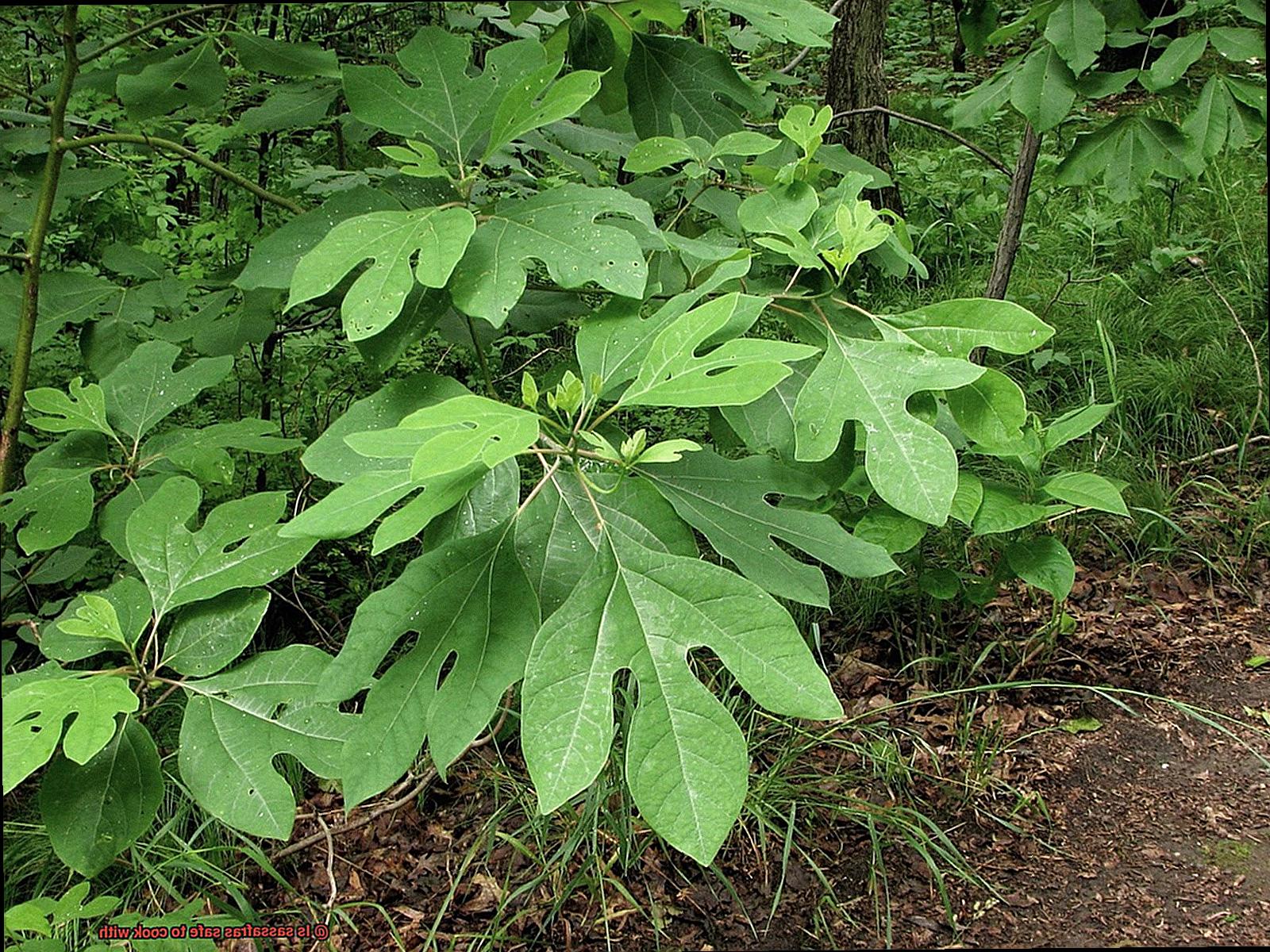
- Safrole is present in sassafras.
- Sassafras oil has high levels of safrole and is banned by the FDA.
- Sassafras leaves and root bark have much lower levels of safrole and are safe when consumed within FDA guidelines.
- Moderation is key when using any ingredient in cooking.
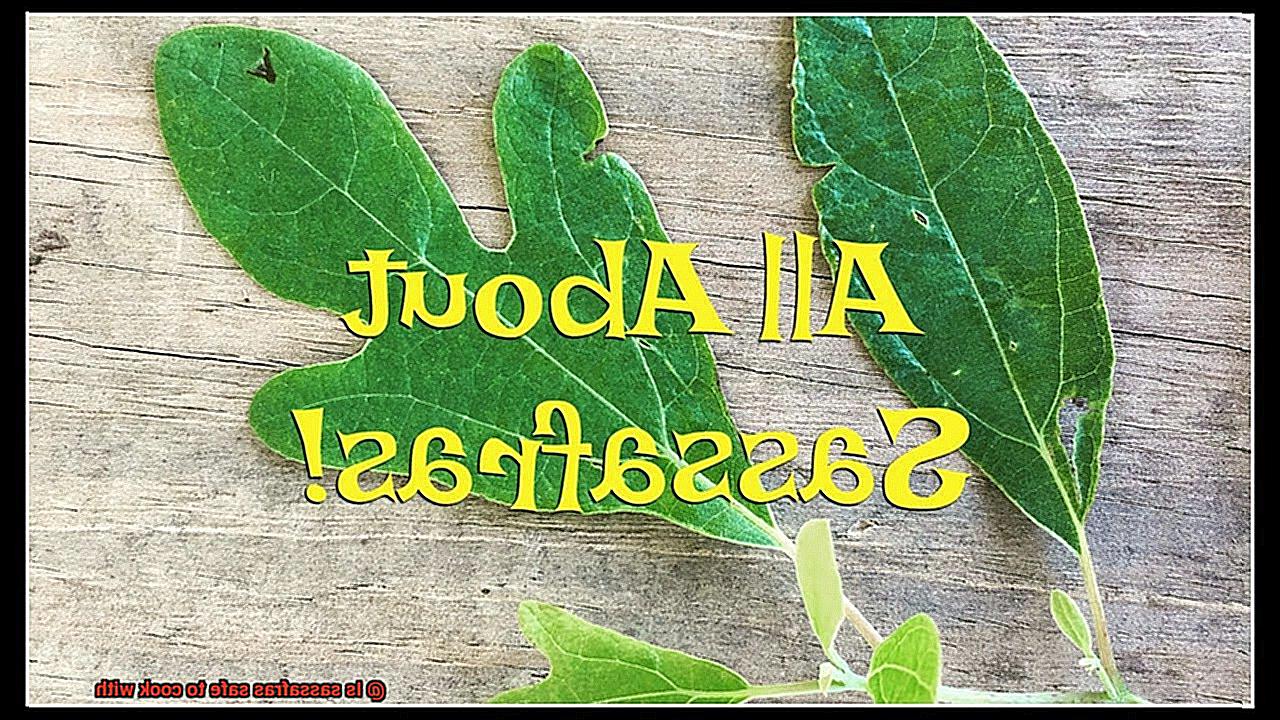
How to Reduce the Risk of Eating Sassafras
Sassafras is a plant that has been used for centuries in cooking, particularly in Cajun and Creole dishes. However, it contains a harmful compound known as safrole that has been linked to liver damage and cancer. To reduce the risk of eating sassafras, it’s essential to take some precautions.
Use Sparingly
Using sassafras sparingly is the first step to reducing the risk of consuming too much safrole. A small amount can go a long way in terms of flavor, so it’s best to use it in moderation. If you’re unsure about how much to add, start with a tiny amount and then add more if necessary.
Opt for Alternative Seasonings
Instead of using sassafras, try using other seasonings such as thyme, oregano, and bay leaves. These alternatives can provide similar flavors without the potential health risks associated with sassafras.
Choose a Reputable Source
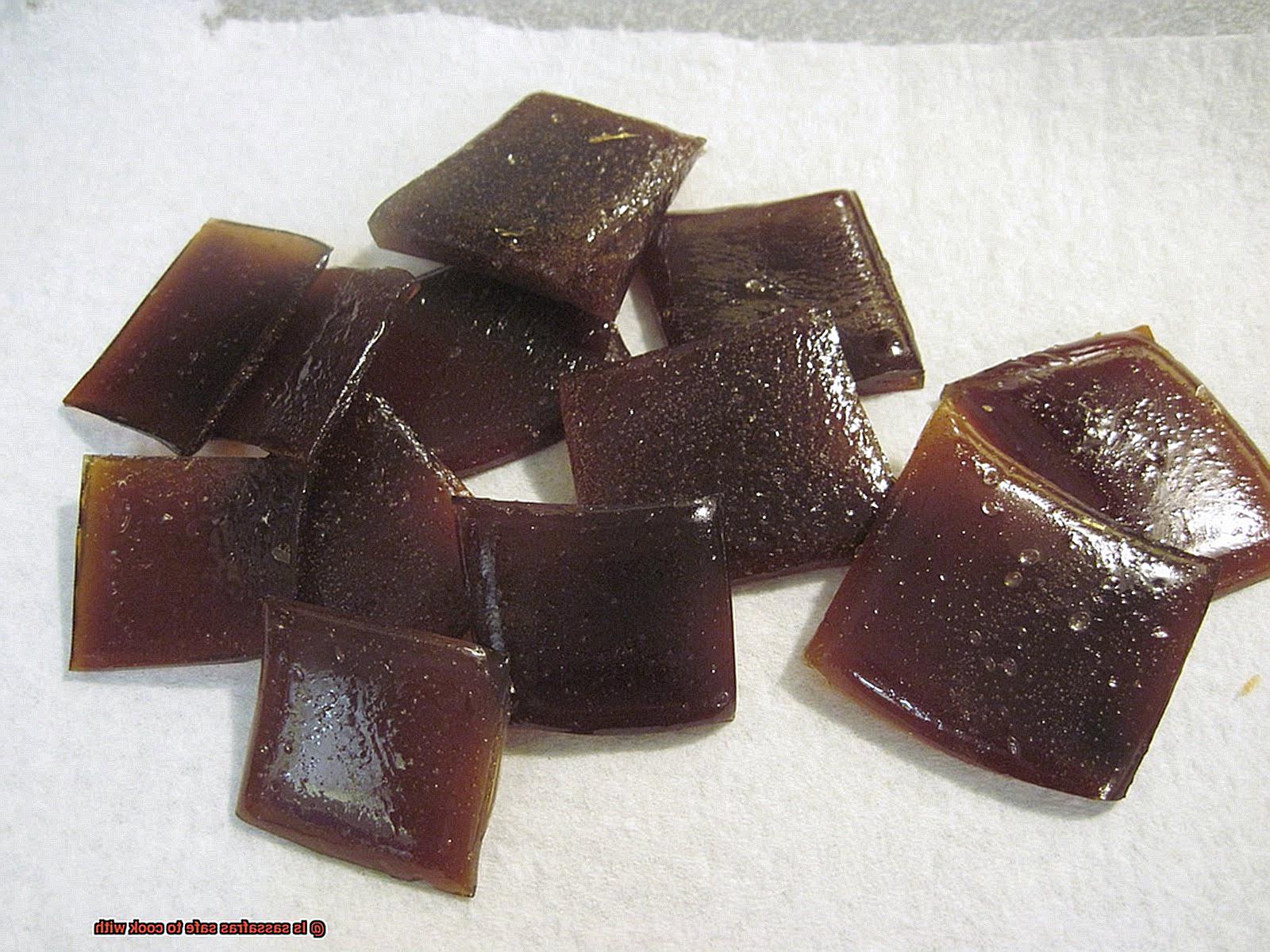
When purchasing sassafras, make sure to buy from reputable suppliers certified by third-party organizations such as USDA Organic or Fair Trade Certified. This ensures that the product has been grown and harvested using safe and sustainable practices.
Check Your Health Status
If you have any pre-existing liver conditions or are taking medication that affects your liver function, it’s best to avoid sassafras altogether. It’s important to be aware of your health status before consuming sassafras.
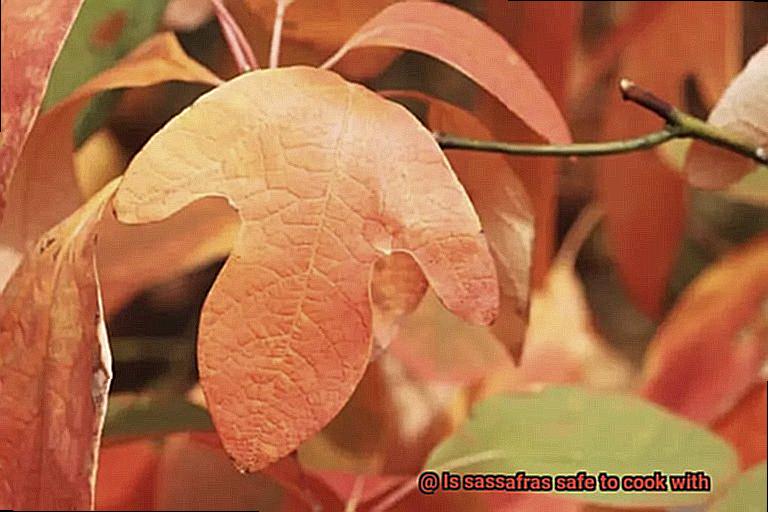
Seek Professional Advice
If you’re unsure about the safety of using sassafras in your cooking, consult with a healthcare professional before adding it to your diet. They can provide guidance on safe usage and potential risks based on your individual health history and needs.
Alternatives to Using Sassafras in Cooking
If you’re a fan of Cajun and Creole cuisine, you may have used sassafras in your cooking before. However, it’s important to note that the safrole compound found in sassafras has been linked to potential health risks. So, what are the alternatives to using sassafras in cooking?
One popular alternative is filé powder, which is made from ground sassafras leaves but does not contain safrole. Filé powder is often used as a thickening agent in gumbo and other Cajun dishes, providing a subtle earthy flavor to your creations.
But if you’re looking for spices that can provide similar flavors to sassafras, consider reaching for anise, cinnamon, or nutmeg. These spices can add warmth and depth to your dishes without any potential health risks.
For those who want to add a smoky flavor to their dishes, smoked paprika or liquid smoke are great options. These ingredients can complement meats, vegetables, and soups while providing a unique twist to your dishes.
If you’re feeling adventurous, there are many more alternatives to explore, such as:
- Thyme: This herb has a woody flavor that can enhance stews and soups.
- Bay leaves: These leaves have a slightly sweet and spicy flavor that can be used in gumbo and jambalaya.
- Fennel seeds: These seeds have a licorice-like flavor that can be used in spice blends for meats and vegetables.
Common Uses for Sassafras in Cajun and Creole Cuisines
Cajun and Creole cuisines are known for their bold and flavorful dishes, and sassafras is a key ingredient in many of them. This aromatic spice adds a unique taste and aroma that can make any dish stand out.
Sassafras comes from a North American plant and is used in various forms. In Cajun and Creole cuisines, sassafras leaves are commonly ground into filé powder, which is used to thicken gumbo. It’s also used as a seasoning in dishes like jambalaya and seafood boils. Sassafras bark can be brewed into tea, which was once used to treat fever and rheumatism. And let’s not forget about sassafras roots, which were once used to make root beer.
However, using sassafras in cooking has raised concerns due to its high levels of safrole, a chemical compound that has been linked to liver damage and cancer in animal studies. To address these concerns, the FDA banned the use of sassafras oil and extracts in food and beverages back in 1960. But don’t worry – using sassafras leaves as a seasoning or thickening agent is still allowed in moderation.
If you’re looking for alternatives to sassafras, there are plenty of options available. Okra or roux can serve as thickeners in gumbo instead of filé powder. And spices like anise, cinnamon, nutmeg, thyme, bay leaves, and fennel seeds can add depth and complexity to any dish.
Y9UWT9OedkU” >
Conclusion
To wrap up, sassafras is a plant of many talents. It boasts a rich history in both medicinal and culinary traditions, but its safety has been called into question due to the presence of safrole. This compound can cause liver damage and cancer when consumed excessively, leading to its ban in commercial food production by the FDA in 1960. However, sassafras remains a beloved ingredient in Southern cuisine, particularly in dishes like gumbo and jambalaya.
Despite the potential risks, some experts believe that sassafras offers health benefits such as anti-inflammatory and antibacterial properties. Its root bark has a unique blend of sweet, spicy flavors with hints of licorice and cinnamon, while its leaves offer a subtle citrusy taste.
If you choose to use sassafras in your cooking or traditional medicine practices, it’s important to take precautions to minimize the risk of consuming too much safrole. Use it sparingly, opt for alternative seasonings or thickening agents like filé powder made from ground sassafras leaves that do not contain safrole, choose reputable sources certified by third-party organizations like USDA Organic or Fair Trade Certified, check your health status before consuming sassafras if you have any pre-existing liver conditions or are taking medication that affects your liver function, and seek professional advice if unsure about its safety.
In conclusion, moderation is key when using any ingredient in cooking or traditional medicine practices. Sassafras can add an unparalleled depth of flavor to your dishes or provide potential health benefits when consumed mindfully within FDA guidelines.






